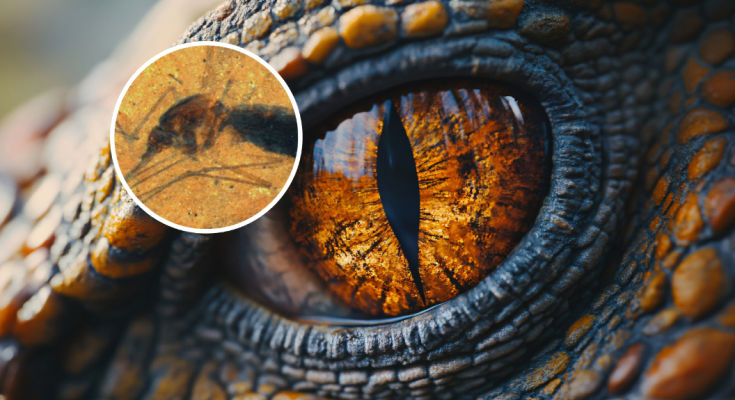
In a discovery that closely resembles that of a popular movie’s plot, Jurassic Park’s source of dinosaur DNA, researchers have found a 46 million-year-old mosquito whose last blood meal is still intact in its stomach. Found in Montana’s Kishenehn Formation shale, the tiny insect’s fossil holds preserved heme molecules, the backbone of hemoglobin.
Hemoglobin is an iron-rich protein that can be found in our red blood cells and is responsible for carrying oxygen from the lungs to the other parts of the body. This means that the insect exhibits blood‑feeding behavior, most likely from animals such as reptiles and mammals alive during that time.
YOU MAY LIKE
- Scientists Confirm There’s About $700 to $900 Trillion Worth of Gold Scattered in Earth’s Oceans
- Scientists Confirm the Oldest Rock on Earth Is 4.16 Billion Years Old — And It’s in Canada
- Scientists Just Found a Hidden Underground Ocean So Massive It Holds 3x More Water Than All the Oceans Combined
Key Takeaways

Photo Credits: Smithsonian Magazine
A Mosquito Frozen in Time
The fossil, unearthed in the 1980s and later examined by Smithsonian experts, showcases a highly preserved female mosquito that still contains iron-rich blood traces in its stomach. Geologists who previously studied similar rock formations confirmed that the fossil was formed around 46 million years ago, during the Eocene epoch.
Although some people are probably hoping it would have the same plot as Jurassic Park, where they found various dinosaur DNA in a mosquito fossil and recreated them from that, the Eocene Epoch is already the age of mammals.
The dinosaur era ended about 66 million years ago, and this mosquito is from after that period. It is also noted that despite having traces of blood, the DNA in those samples is not retrievable. Still, the discovery offers a snapshot of the past and highlights just how ancient mosquitoes really are.
Read more: Smithsonian Magazine
How It Survived for 46 Million Years
The mosquito ended up in fine-grained anoxic shale at the bottom of an Eocene lake, which is a perfect environment for fossil preservation due to a combination of various factors. One of them is the protection from scavengers and other organisms that will decompose a fossil.
The fine-grained sediment also allowed the preservation of the structure of the mosquito, which most likely got a rapid burial and lithification, which helped it survive for 46 million years. The minimal disturbance during all that time preserved not only its outer body but also the fragile internal molecules like heme. Unfortunately, DNA is not capable of surviving even in this perfect environment for that amount of time.
What Did It Eat?

So, if we know there are blood traces in its stomach, and that it is a mosquito that feeds on blood, then whose blood did it eat? The few preliminary tests came back suggesting that it was from a small bird during the Eocene era.
This is an expected result given that mosquitoes like to target small birds and mammals due to their abundance of blood and nutrients. So, even if the DNA was retrievable which it isn’t, then we will still just end up with a bird’s genetic information, and not that of dinosaurs or closely related species.
Read more: Sci News
Why It Matters

This discovery marks the oldest direct evidence of blood-feeding in the fossil record. It also confirms that mosquitoes’ line of species goes back at least as far as 46 million years ago.
The heme molecules that survived are the best findings of the study, which indicates that some organic materials can last for a really long time. This opens up possibilities in studying ancient biochemistry and interactions of living beings during their ancient era.
Final Thoughts
Some of you reading this article are probably hoping that we could have unlocked the DNA and start the de-extinction of Dinosaurs, or you are hoping for the exact opposite, which is what happened in this case.
However, the fact that a mosquito carrying its blood meal from 46 million years ago was preserved means there might be others. We just haven’t found them yet, the fossils that could possibly be older and exist in the time of the Jurassic era.
Read more: Scientists Say Birds Can Use Quantum Physics to Perceive Earth’s Magnetic Field



